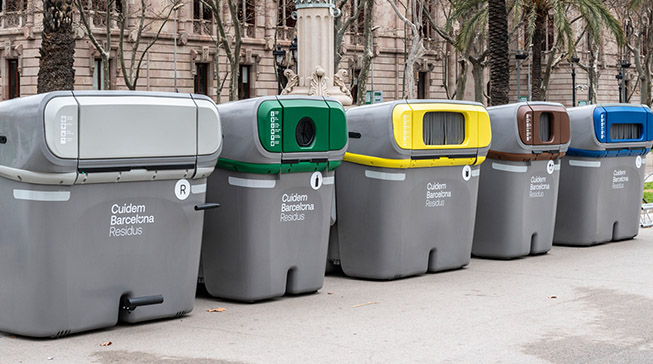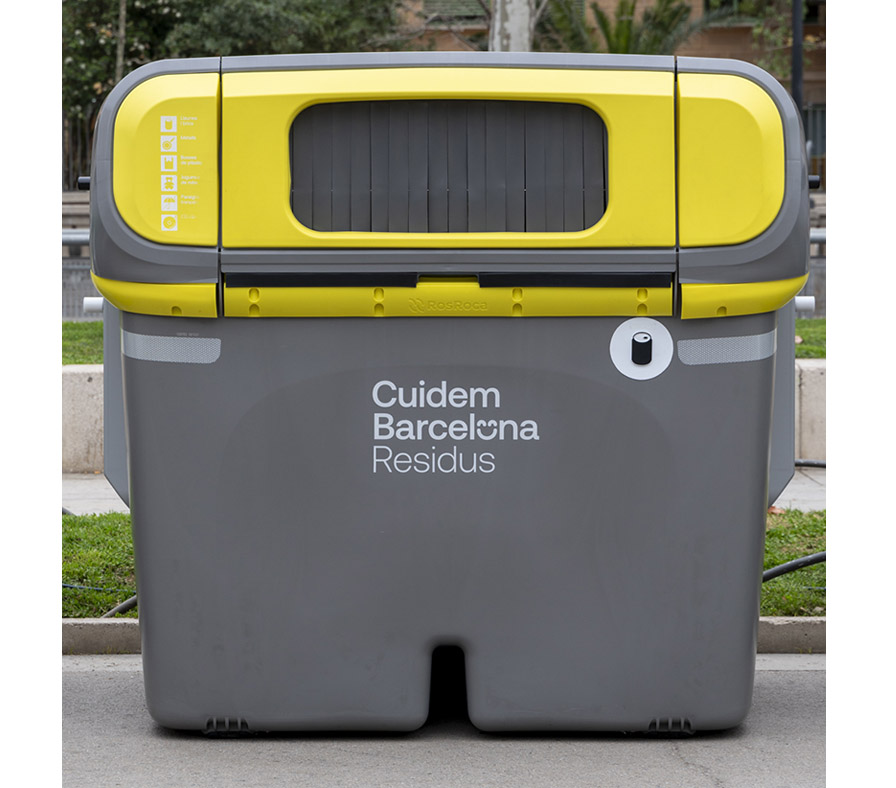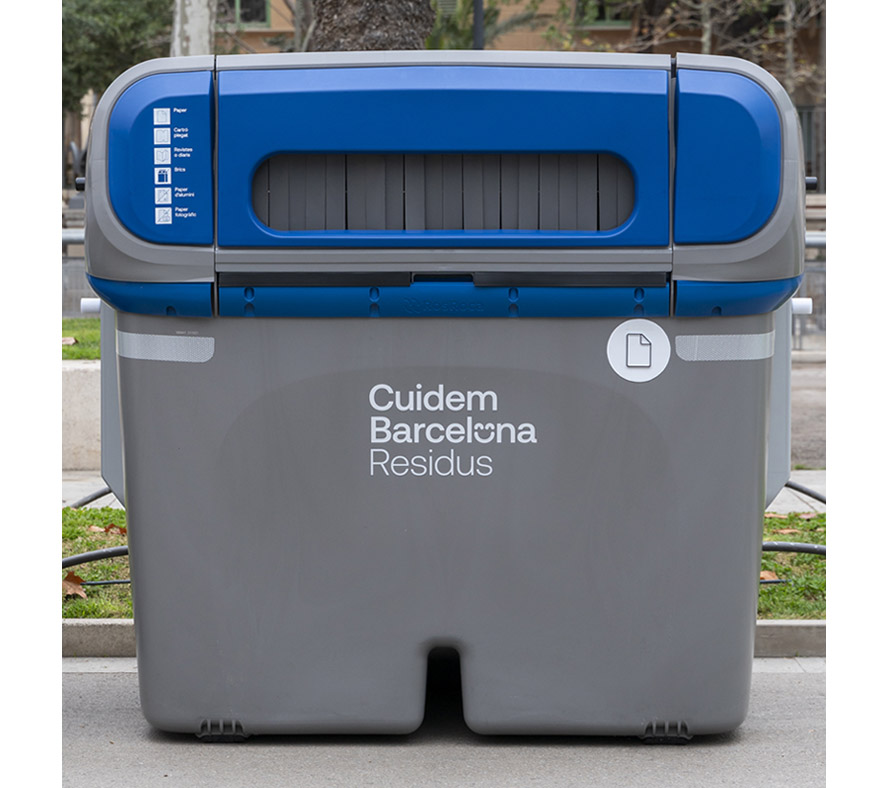Contenedores en la calle
Barcelona apuesta por una recogida selectiva diferenciada en cinco fracciones con un despliegue en toda la ciudad de contenedores diferenciados para cada una de estas y así facilitar la gestión de los residuos: orgánica, plásticos y metales, papel y cartón, vidrio y rechazo.
La recogida de residuos con contenedores en la calle es la más extendida en toda la ciudad. Toda la ciudadanía que reside en zonas donde está implantado este modelo de recogida selectiva, dispone de contenedores a menos de 100 metros de su domicilio.
Todos los residuos que no se pueden tirar en los contenedores deben llevarse a los puntos verdes.


Contenedor amarillo – plásticos y metales
Qué se puede tirar:
botellas y bolsas de plástico, envases de yogur, latas de bebidas, briks, chapas de metal, papel de aluminio, papel de plástico transparente, bandejas de porexpan, platos y vasos de plástico, etc.
Qué no se puede tirar:
juguetes, mangueras de regar, tubos, materiales como cintas de vídeo y CDs, y envases de productos peligrosos (disolventes o pinturas), etc.
Los envases se llevan a las plantas de selección de residuos, donde se separan los diferentes materiales mediante la combinación de técnicas ópticas, mecánicas y manuales. Los diversos materiales seleccionados son compactados, embalados y distribuidos en los centros de selección.

Contenedor azul – papel y cartón
Qué se puede tirar:
envases y cajas de cartón, cajas de cartón, periódicos, revistas, libretas sin espiral, sobres, bolsas de papel, folios, papel de regalo, etc.
Qué no se puede tirar:
papel y material sucio, como por ejemplo servilletas de papel o papel de cocina manchado de aceite (que van al contenedor marrón). Los brics y el papel de aluminio van al contenedor amarillo.
Los residuos recogidos en el contenedor azul se llevan a plantas de reciclaje, donde se convierten en grandes balas de papel triturado. Estas balas se ponen en remojo para obtener pasta de papel, que se filtra para eliminar los materiales férricos. La pasta resultante se seca, se plancha y se convierte en bobinas, que se distribuyen en las fábricas papeleras para tener una nueva vida útil.

Contenedor verde – vidrio
Qué se puede tirar:
envases y botellas de vidrio, sin tapas ni tapones.
Qué no se puede tirar:
vasos rotos, vidrio plano, espejos, restos de cerámica, platos, bombillas, fluorescentes, etc.
El vidrio recogido se lleva a la planta de reciclaje, donde se limpia, se extraen los materiales férricos con imanes, y se tritura hasta convertirlo en polvo (vidrio seleccionado, limpio y molido), que permite fabricar envases de vidrio exactamente iguales que los originales para hacer botellas, botes o bombillas entre otros.

Contenedor marrón – orgánica
Qué se puede tirar:
restos de carne, pescado, pan, fruta, verdura, marisco, cáscaras de huevo y de fruta seca, tapones de corcho, bolsas de infusión, marro del café, papel de cocina y servilletas manchadas de aceite, restos de jardinería, etc.
Qué no se puede tirar:
restos de barrer, cabellos, pañales y excrementos de animales, que van al contenedor gris.
Los residuos de origen vegetal y/o animal son susceptibles de degradarse biológicamente, como los restos de comida y de jardinería. Es una fracción de residuos muy relevante, ya que constituye la tercera parte de los residuos que generamos en el hogar. Estos residuos se llevan a los ecoparques, donde se convierten en compost y en biogás.

Contenedor gris – rechazo
Qué se puede tirar:
colillas, compresas, pañales, restos de barrer, algodón, cabellos, bolígrafos y lápices usados, excrementos de animales.
Qué no se puede tirar:
bolsas de infusión, papel de cocina manchado de aceite y restos de comida, que van al contenedor marrón. Restos de madera, CDs, envases que contengan materiales tóxicos y peligrosos o ropa, que deben llevarse a los Puntos Verdes.
En el contenedor gris se depositan todos aquellos residuos que no se pueden recoger de manera selectiva. Todos los residuos se llevan a los ecoparques, donde se separan todos aquellos materiales que se puedan reciclar. Los residuos que no pueden ser reciclados deben llevarse a los vertederos o deben ser incinerados. Lo más idóneo es que este tipo de tratamiento finalista sirva únicamente para los residuos que no se pueden reutilizar o reciclar.
Afecta a las fracciones
Orgánica
Plásticos y metales
Vidrio
Papel y cartón
Rechazo
Ámbitos geográficos donde está implantado
Todos los distritos de la ciudad.
